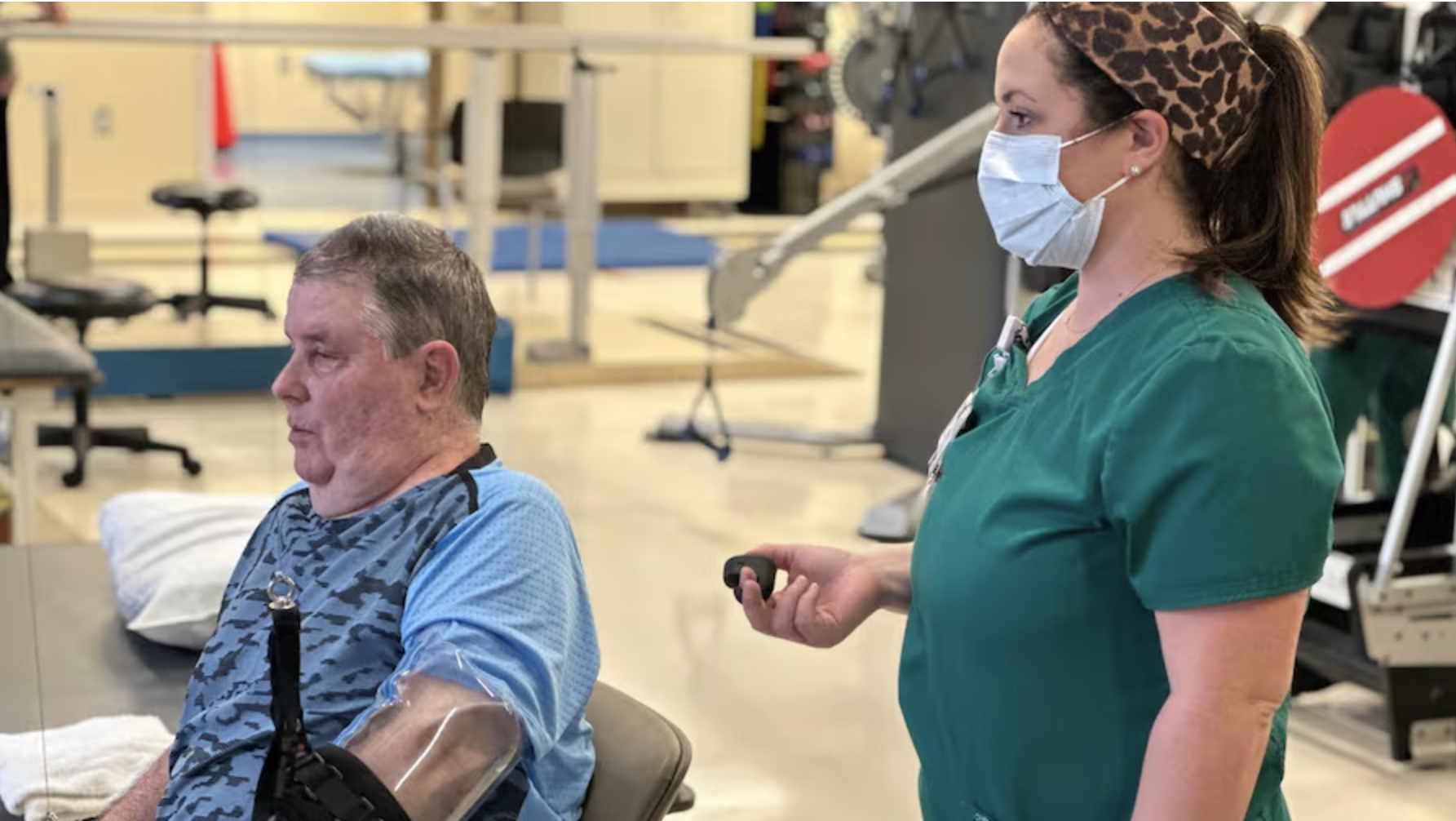Source: Tampa Bay Times
Written Christopher O’Donnell
Image By Tampa General Hospital
TAMPA — The pain roused Randy Jackson from his sleep. He tried to sit up but was too dizzy. His face was numb.
The Tampa resident had suffered mild strokes before but this one in February last year was serious. His left side was paralyzed. He spent two days in intensive care.
He emerged from hospital unable to walk or move his left arm. He was facing a long and uncertain recovery through physical and occupational therapy.
Jackson, 68, learned slowly to walk again, first with a walker and then a cane. But moving his left arm was still a struggle 10 months after his stroke. That was when doctors at Tampa General Hospital convinced him to undergo a new procedure that could help retrain his brain to control his arm.
The procedure requires the insertion of a small pacemaker-like device in the chest that is hooked up to the vagus nerve. The device, known as a Vivistim, is then triggered to send signals back to the brain in sync with the patient to help move impaired limbs.
When repeated over time, the signals cause the formation of new neural connections within the brain, bypassing areas damaged by lack of oxygen during a stroke.
Known as vagus nerve stimulation, the procedure has proven to restore upper-body movement to a high percentage of patients, allowing them to resume activities that were part of their daily routine, such as buttoning a shirt or cutting their own food during meals.
“It’s an exciting new breakthrough,” said Oliver Flouty, assistant professor in the department of neurosurgery and brain repair at the USF Health Morsani College of Medicine.
Strokes are common in the United States, affecting almost 800,000 annually, according to the Centers for Disease Control and Prevention. The majority are ischemic strokes, often caused by blockages of the middle cerebral artery, which provides blood to the brain’s frontal lobe where movement and speech are controlled.
Once the patient has recovered from surgery, physical and occupational therapy is resumed. Using a remote control, the therapist can trigger the device to start sending pulses to the brain during therapy sessions. Patients can also trigger the device by passing a magnet over it while they do at-home exercises.
During clinical trials, 85% of patients saw significant improvements in movement after three years of treatment, Bezchlibnyk said. Science isn’t quite sure why it works so well but some studies suggest it promotes the release of neurotransmitters that may help repair neurons.
Tampa General has performed the procedure on only a handful of patients so far but hopes to make it more widely available to help those undergoing rehab.
“You’re promoting the brain’s natural learning mechanism,” said Bezchlibnyk. “There really hasn’t been anything out there for these patients before this.”
The limited movement Jackson had in his left arm made it tough to sleep on his left side. He had to rely on his wife to cut up his steak.
But since his surgery in December, he’s already seen improvement in how high he can raise his arm.
Jackson retired in 2016 after 42 years with the U.S. Air Force, including a stint as airfield manager at MacDill Air Force Base. Before his stroke he liked to play pickleball with his wife. His goal is to return to the pickleball court soon.
“I watch it on TV,” he said, “but I want to be out there doing it.”


